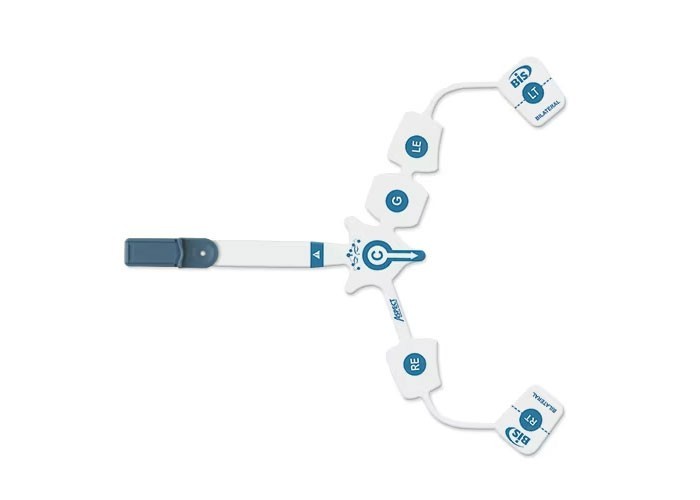BIS™ Bilateral Sensor
Overview
Gain insight into brain response with BIS™ technology
BIS™ technology offers clinicians added security for providing specialized care and comfort for their patients, including those who may be more sensitive to the hemodynamic effects of anesthesia.
BIS™ monitoring technology provides clinicians with valuable information about patient status to help address each patient’s unique anesthetic requirements. This technology may be particularly valuable for:
- Patients with complex conditions whose status may suddenly or frequently change
- Patients with cardiovascular conditions
- Obese patients
- Trauma patients or others requiring reduced levels of anesthesia
Features
- The BIS™ bilateral sensor is designed for symmetrical placement to capture bi-hemispheric data.
- The BIS™ bilateral sensor offers:
- Peel-and-stick simplicity
- Zipprep™ technology
- The BIS™ bilateral sensor enables detection of hemispheric differences in the brain, which may prove useful for advanced monitoring applications.
- BIS™ sensors collect electroencephalograph (EEG) data.
- BIS™ technology enables simple EEG data collection via a noninvasive sensor applied to the patient’s forehead.
- BIS™ sensors are resistant to artifact from electrocautery devices.
Technology
How does our sensor technology work to capture the low-voltage EEG signal?
First, we use a conductive ink that is printed directly on the surface of the sensor, under the adhesive foam and Zipprep™ technology. This creates an electrode surface that is helpful in picking up the low-voltage EEG.
Second, the Zipprep technology helps clear away the first layer of the epidermis. The mechanical action of pressing on the electrode results in the tines clearing away some of the first layer of dead skin cells, exposing the inner, more electrically conductive layer of skin. The conductive gel within the electrode permeates into this newly exposed area, creating a good electrical pathway between the EEG-carrying inner layers of skin and the conductive traces within the sensor. The EEG signal is then carried through these traces to the BIS™ monitor.
Third, we include a thin layer of sponge that contains a very precise amount of gel. This gel creates a "bridge" between the forehead and the conductive electrode surface.
These combined components help achieve an optimal environment to acquire and maintain the EEG signal.


